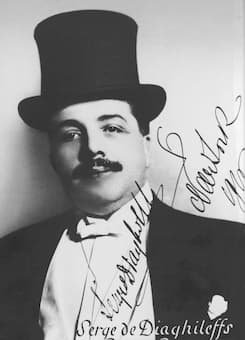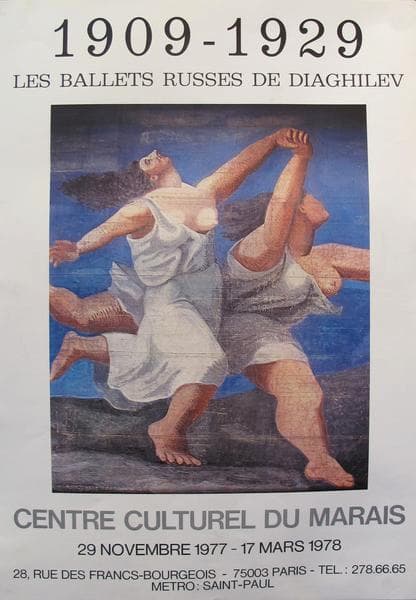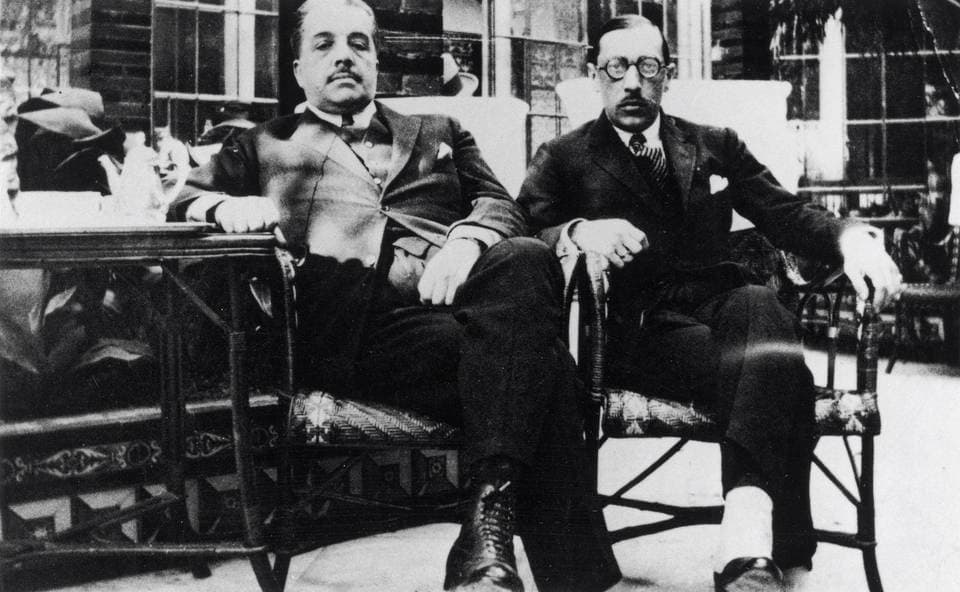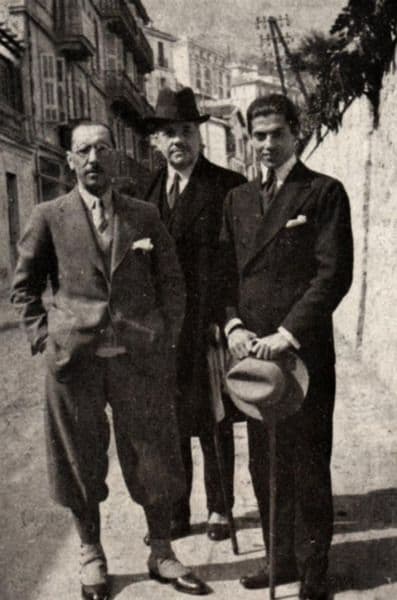Sergey Diaghilev (1872-1929) was a perceptive amateur of the arts with a flair for organization and publicity. His family had amassed a fortune from a vodka distillery business, but his musical ambitions came to an unceremonious halt. Nikolai Rimsky-Korsakov, his professor at the St. Petersburg Conservatory of Music, bluntly told him “you have absolutely no talent for music.” Thus rejected, Diaghilev voraciously studied Western and Russian art, and he was hired as the special assistant to the director of the Imperial theaters.

Sergey Diaghilev
Diaghilev soon staged ballet productions with help from his close personal friends Léon Bakst and Alexandre Benois. Personal differences of opinion led to Diaghilev’s dismissal, but in due course, he miraculously was involved in all aspects of the production and creation of operas and ballets by composers including Stravinsky, Ravel, Debussy and Prokofiev.
Igor Stravinsky: Firebird, (Dance of the Firebird)
Initially, Diaghilev organized a huge exhibition of Russian portrait paintings in St. Petersburg in 1905. He took the exhibition to Paris the following year, but his proper career began in 1907 with five concerts of Russian music at the Paris Opéra. He was invited to return the following year with ballet as well as opera, and thus established the famous “Ballets Russes.”

Ballet Russes
Diaghilev appointed Léon Bakst as the artistic director and together they developed a form of ballet with appeal to the general public. And let’s not forget that the exotic appeal of the Ballets Russes had a tremendous impact on related arts throughout Europe. It was Coco Chanel who supposedly said, “Diaghilev invented Russia for foreigners.” The company included the best young Russian dancers, among them Anna Pavlova, Adolph Bolm, Vaslav Nijinsky, Tamara Karsavina and Vera Karalli, and their opening night on 19 May 1909 was a veritable sensation!
Maurice Ravel: Daphnis et Chloé
From the very beginning, Diaghilev’s most notable composer/collaborator was Igor Stravinsky. In 1910 he commissioned “The Firebird,” followed by “Petrushka” in 1911, “The Rite of Spring” in 1913, and in collaboration with Picasso “Pulcinella” in 1920 and “Les Noces” in 1923.

Sergey Diaghilev and Igor Stravinsky, 1921
Other important ballet music commissions included works by Tcherepnin, Debussy, Ravel, Satie, Manuel de Falla, Richard Strauss, Prokofiev, Respighi, Poulenc and various others. Much to the irritation of the Soviet regime, Diaghilev stayed in Europe following the Russian Revolution of 1917. When it became clear that he could not be lured back to his homeland, authorities classified him as a particularly insidious example of bourgeois decadence, and Soviet art history failed to even mention his name for the next 60 years.
Claude Debussy: Jeux (Exerpts)
Diaghilev was a pioneer in adapting new musical styles to modern ballet. His impact on the world of ballet was enormous, as members of the Ballets Russes went on to found independent ballet traditions in the United States and in England. And his personal life was just as colorful as any of his ballet productions. His most famous lover was spectacular dancer Vaslav Nijinsky. When the dancer got married in 1913, Diaghilev summarily dismissed him from the Ballets Russes and replaced him, as a lover, with Léonide Massine. Nijinsky would later write in his diary that he was always disgusted by having been Diaghilev’s lover, and that the affair had simply been a matter of career advancement.

Stravinsky, Diaghilev and Lifar
Other famous Diaghilev lovers included Anton Dolin, Serge Lifar, his secretary and librettist Boris Kochno, and the composer and conductor Igor Markevitch, who would subsequently marry Nijinsky’s daughter! Diaghilev also appears to have had an explosive personality, always carrying a cane during rehearsals and angrily banging the floor when he was displeased. Be that as it may, he was the man behind the Russian Revolution in the Arts and he changed the performance world forever.
For more of the best in classical music, sign up for our E-Newsletter
